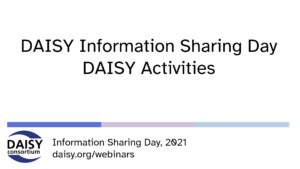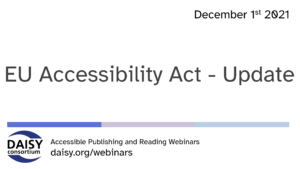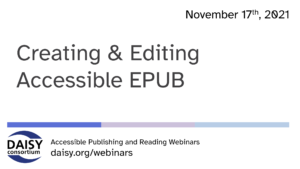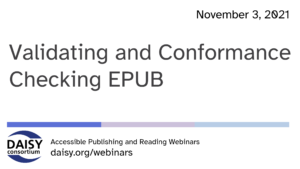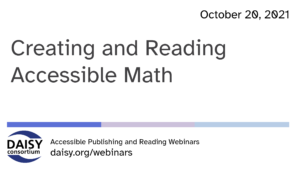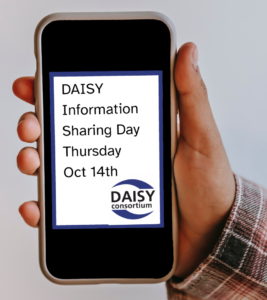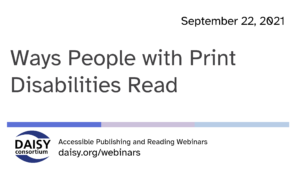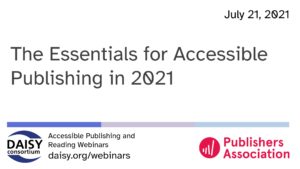Articles archive
Towards the end of 2021 we held a special DAISY Information Sharing Day webinar. This part of the webinar highlights…
In our series of free weekly webinars December 1st saw a session focused on the European Accessibility Act giving us a…
In our series of free weekly webinars November 17th saw a session focused on “Creating and Editing Accessible EPUB”. This webinar…
In our series of free weekly webinars November 3rd saw a session focused on the validation and conformance of EPUB content.…
In our series of free weekly webinars October 20th saw a session focused on accessible math and some of the complexities…
In our series of free weekly webinars October 6th saw a session focused on EPUB Accessibility. Our speakers showed everyone what…
On Thursday October 14th we will be hosting a free information sharing day via Zoom, bringing you updates on a…
The Publishing Community Group at W3C has announced the release of the report, A User Experience Guide for Accessibility Metadata this…
In our series of free weekly webinars September 22nd saw a session focused on user experience and how people with print…
In our series of free DAISY webinars July 21st saw a session focused on The Essentials for Accessible Publishing in 2021.…

